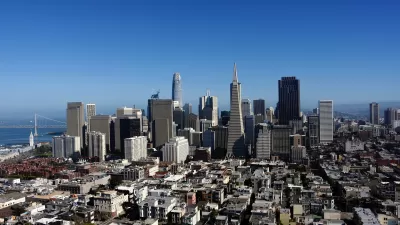My graduate school education left me with a lot of general ideas and a handful of specific ones. One that stuck with me is a concept from landscape architecture: the desire path. Technically, the term means a path where there isn't supposed to be one, a trail of wear and tear that wasn't planned.
My graduate school education left me with a lot of general ideas and a handful of specific ones. One that stuck with me is a concept from landscape architecture: the desire path. Technically, the term means a path where there isn't supposed to be one, a trail of wear and tear that wasn't planned.
College campuses are rife with desire paths, because landscapers begin with idealistic visions of sweeping lawns, and students adapt the landscape to meet their practical need to get to class on time. On my campus (San José State), groundskeepers perpetually battled with students, posting "Keep Off the Grass" signs in every corner and even cordoning off certain sections completely. They finally surrendered one part of campus, paving diagonal sidewalks right over the paths worn by harried students seeking a shortcut.
There is a growing group on Flickr that collects pictures of these paths. These pictures resonate with me, because of the plain human truth that they reveal. No matter how well we plan, no matter how many pedestrian studies we conduct or comprehensive plans we create, the human element is going to find its own way. This is something I try to remember in everything I do, and something we as a profession can continue to learn from. The people who disobey the beautiful logic of smart growth and urban design are trying to tell us something, and we need to watch and listen. We need to go back to the places we create and see how they work in real life. We need to plan for opening day, but make sure we're also there a month, a year, five years later to adapt and refine based on how people actually use the built environment. The desire paths are there for the finding, if your eyes are open.
As a final note, I've noticed that William H. Whyte's classic of urban observation "The Social Life of Small Urban Spaces" has finally turned up on YouTube. Every planner, urban designer and landscape architect should watch it at some point in their career. It's funny, whimsical, and turns up a lot of truth about human behavior.

Maui's Vacation Rental Debate Turns Ugly
Verbal attacks, misinformation campaigns and fistfights plague a high-stakes debate to convert thousands of vacation rentals into long-term housing.

Planetizen Federal Action Tracker
A weekly monitor of how Trump’s orders and actions are impacting planners and planning in America.

In Urban Planning, AI Prompting Could be the New Design Thinking
Creativity has long been key to great urban design. What if we see AI as our new creative partner?

King County Supportive Housing Program Offers Hope for Unhoused Residents
The county is taking a ‘Housing First’ approach that prioritizes getting people into housing, then offering wraparound supportive services.

Researchers Use AI to Get Clearer Picture of US Housing
Analysts are using artificial intelligence to supercharge their research by allowing them to comb through data faster. Though these AI tools can be error prone, they save time and housing researchers are optimistic about the future.

Making Shared Micromobility More Inclusive
Cities and shared mobility system operators can do more to include people with disabilities in planning and operations, per a new report.
Urban Design for Planners 1: Software Tools
This six-course series explores essential urban design concepts using open source software and equips planners with the tools they need to participate fully in the urban design process.
Planning for Universal Design
Learn the tools for implementing Universal Design in planning regulations.
planning NEXT
Appalachian Highlands Housing Partners
Mpact (founded as Rail~Volution)
City of Camden Redevelopment Agency
City of Astoria
City of Portland
City of Laramie






























